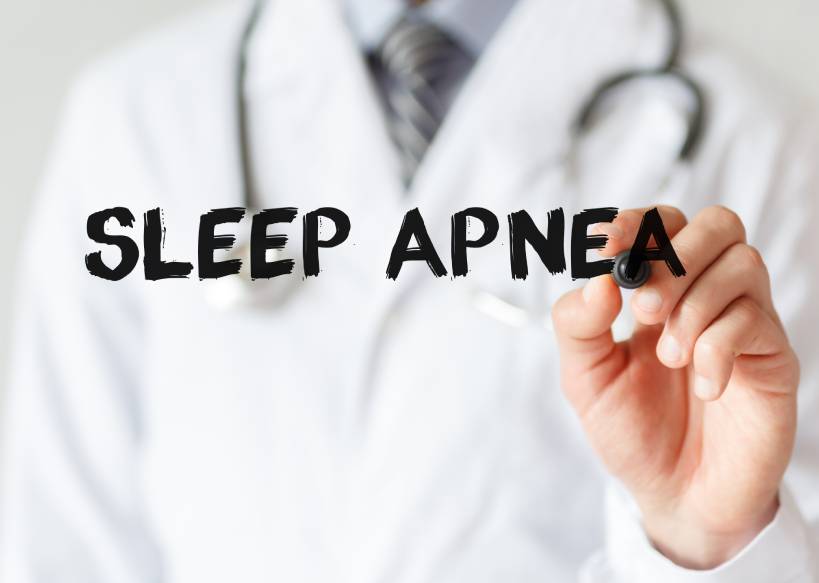NEWS & INSIGHTS
Understanding 3 Different Types of Sleep Apnea

Sleep apnea affects millions of people globally. This disorder is characterized by frequent breathing pauses or shallow breathing spells while you sleep, which can reduce the quality of your sleep and raise your risk of high blood pressure, heart disease, and stroke. Understanding the many types of sleep apnea and the possible therapies to manage the condition properly is critical.
Types of Sleep Apnea
According to the Mayo Clinic, the most prevalent kind of sleep apnea is called obstructive sleep apnea, or OSA. It happens when the throat’s muscles relax too much as you sleep, physically obstructing your airway. Breathing becomes erratic as a result of the occlusion. Continuous Positive Airway Pressure (CPAP) equipment, weight control, positional therapy, and, if necessary, surgery are all possible forms of treatment for open airway disease (OSA).
The brain’s incapacity to properly communicate with the breathing muscles is known as central sleep apnea or CSA. A malfunction in the brain’s respiratory control centre causes CSA, as opposed to OSA, in which the airway is physically closed. Depending on the severity of the illness, treatment for CSA may involve treating underlying medical issues, employing Adaptive Servo-Ventilation (ASV) equipment, or giving oxygen therapy and medicines, says the National Institutes of Health.
Understanding Central Sleep Apnea (CSA)
Unlike OSA, central sleep apnea (CSA) results from an abnormality in the brain’s capacity to send the proper signals for breathing during sleep. In contrast to OSA, which is caused by a physical airway obstruction, CSA is caused by issues with the brain’s respiratory control centre. Undergoing polysomnography, a sleep study that tracks numerous parameters while you sleep, is necessary to diagnose CSA. Medication, oxygen therapy, CPAP, adaptive servo-ventilation (ASV), weight control, and positioning therapy are a few lifestyle modifications that can be used to treat community-associated pneumonia (CSA).
Insights into Complex Sleep Apnea Syndrome (CompSAS)
Treatment-Emergent Central Sleep Apnea, or Complex Sleep Apnea Syndrome, combines OSA and CSA symptoms. It may manifest during OSA treatment, complicating diagnosis and care. Polysomnography is frequently required to diagnose CompSAS and identify mixed apnea episode patterns. CPAP therapy may be the first course of treatment, with modifications made in response to the patient’s response. CompSAS presents particular difficulties, and successful treatment requires individualized attention.
Diagnosis and Treatment Across Types of Sleep Apnea
A comprehensive evaluation that includes a review of medical history, a physical examination, and a sleep study—often done using polysomnography—is necessary to diagnose sleep apnea. After a diagnosis, the kind of sleep apnea is determined, which helps choose the best course of action.
Preventive Measures and Lifestyle Changes
Even if there are sleep apnea treatment options, implementing preventive measures and lifestyle modifications can significantly enhance overall well-being and reduce symptoms. Harvard Health says these measures can include:
- The severity of sleep apnea can be lessened by following a weight-loss program and maintaining a healthy weight.
- Regularly exercising for at least half an hour improves general health and helps reduce sleep apnea symptoms.
- Maintaining a healthy diet can benefit sleep apnea therapy in addition to helping with weight management.
- It’s best to avoid alcohol and sedatives, as they relax the muscles in the throat and exacerbate sleep apnea.
- The frequency of sleep apnea episodes can be decreased by sleeping on your side rather than your back.
- Giving up smoking is crucial for lowering fluid retention and inflammation, two conditions that exacerbate the symptoms of sleep apnea.
To properly manage this prevalent sleep problem, it is imperative to understand the many types of sleep apnea, their diagnosis, and available treatment choices. For those experiencing sleep apnea symptoms, early identification and professional help are crucial, even though lifestyle modifications and preventive measures are essential in mitigating symptoms. To achieve the best possible treatment outcomes and an enhanced quality of life, medical intervention is frequently necessary for primary sleep apnea, mixed sleep apnea, sleep-related hypoventilation, and sleep-related hypoxemia.
Sources: www.ncbi.nlm.nih.gov ; www.mayoclinic.org ; www.sleepfoundation.org
WELL Health Diagnostic Centres’ 40+ Ontario locations provide OHIP-covered cardiology, radiology, women’s health, telehealth, and sleep diagnostic services – with shorter wait times, faster report turn-around, and the highest standard of patient care.
